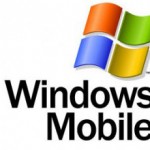 New York — IBM Corp., the world’s third-biggest software maker, will soon enshroud Microsoft Corp.’s Windows Live SaaS suite, with the recently introduced LotusLive, as an attempt to lure new customers by tapping into so-called cloud computing, which it describes as a portfolio of integrated Internet-hosted services for social networking and collaboration in workplaces.
New York — IBM Corp., the world’s third-biggest software maker, will soon enshroud Microsoft Corp.’s Windows Live SaaS suite, with the recently introduced LotusLive, as an attempt to lure new customers by tapping into so-called cloud computing, which it describes as a portfolio of integrated Internet-hosted services for social networking and collaboration in workplaces.
IBM’s “LotusLive Engage” discards the Bluehouse moniker for its SAAS messaging and collaboration applications, which are hosted in the cloud, or over the Web.
LotusLive is planned to launch in the first quarter, and will offer businesses with file sharing, e-mail and Web conferencing; it also incorporates with Salesforce.com, Skype and LinkedIn to reach possibly 400 million new users, IBM announced Monday at its Lotusphere conference in Orlando.
LotusLive, the cloud-based enterprise applications suite will challenge to Microsoft Windows Live and Google Apps.
At LotusLive.com, businesses can avail the suite of hosted collaboration and communication services designed to be easy to use and adopt, without requiring a hefty IT investment, IBM said.
When it is launched officially during the first quarter, Engage will be among the first of many integrated social network and collaboration services for enterprises, allowing users exchange information and meet online to collaborate without security concerns, Sean Poulley, vice president of online collaboration for Lotus Software, told the Lotusphere audience here.
LotusLive would let users to create networks with business partners and customers, IBM said today in a statement. The software is supplied via the Internet, which is represented as a cloud on network diagrams, hence the term.
IBM intends to take advantage on Microsoft Corp.’s Exchange, which has more than half the market for e-mail server software. Businesses use such applications to handle employee e-mails and other messages on their networks. By moving Lotus to the Internet, customers can save on storage and spend less time maintaining the software, said Bob Picciano, Lotus’s general manager.
“Everyone’s focused right now on doing more with less,” Picciano said.
Developed on open standards, LotusLive is meant to allow for simple integration with third-party applications. It features a “click to cloud” functionality to tie existing applications residing on customer servers with LotusLive services.
IBM has also said that it has made partnerships with Skype, LinkedIn and Salesforce.com for LotusLive. LinkedIn, which functions as a social network for professional contacts, plans to tie its site with LotusLive, Lotus Notes and Lotus Connections. Salesforce.com plans to integrate its CRM software with LotusLive services. Skype will offer voice and video capabilities within LotusLive.
During a presentation here, IBM’s Ron Sebastian displayed a LotusLive dashboard with options for online meetings, a network, activities, file sharing and forums.
Bridging the gap between IBM’s on-premise software world and its new LotusLive SaaS world, Sebastian demonstrated how a user could drag a presentation from their Lotus Notes e-mail client drop into LotusLive and upload it instantly into the cloud.
He also picked to host a meeting from Lotus Notes and was brought directly into LotusLive meetings environment, adding files from Notes and the LotusLive shared storage system to share with others in the meeting.
These tasks were meant to show how IBM’s Lotus collaboration software is becoming a “click to cloud” utility geared for ease of use.
This move by IBM is in line with the trend from vendors like Google, Zoho, Jive, Microsoft, Salesforce.com, Socialtext, Jive Software, Central Desktop, Telligent and Atlassian and others to offer collaboration and communication applications via the software-as-a-service (SaaS) model.
The company last week mentioned that it would acquire e-mail software assets from Hong Kong-based Outblaze Ltd. That will let LotusLive users access their e-mail from any computer via the Web, similar to the way Google Inc.’s Gmail works.
IBM ranks behind Microsoft and Oracle Corp. in worldwide software sales.
IBM rose 80 cents to $84.92 on Jan. 16 in New York Stock Exchange composite trading. The shares dropped 22 percent last year.


